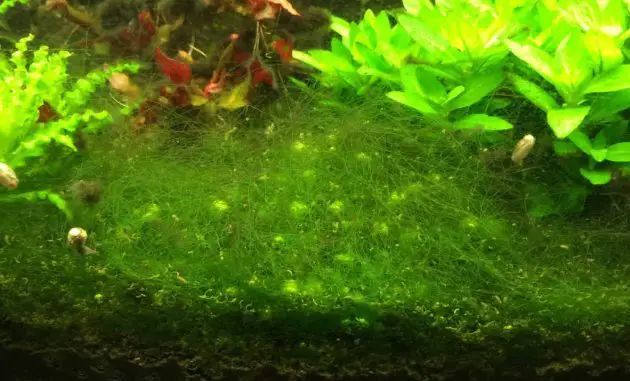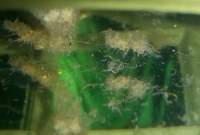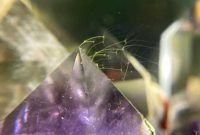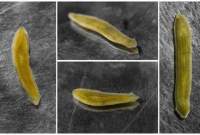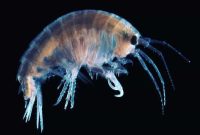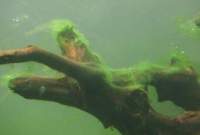There are many algae types that are usually seen present in freshwater aquariums. The green algae color type is the familiar ‘weed’ lives in aquarists’ tank than the red algae.
Almost most aquarium hobbyists have been encountered an algae outbreak at least once. It is something that they undoubtedly come across.
Green algae can harm every population inside your tank. Learning how to get rid of algae and keeping them under control is something every newbie should know.
At this moment, we only pointed to discuss one of the green algae types that are ‘Cladophora Algae.’ If you are interested or have some issues with these algae, we will offer some advice to remove them from your tank. Let’s begin!!
TABLE OF CONTENTS
What Is Cladophora Algae?
They are branching and tough green filamentous algae (Ulvophyceae). These algae have many common names, including blanket weed, branched algae, string algae, or silkweed.
Cladophora has many species such C. glomerata, C. vagabunda, C. brasiliana, etc. But there have not been scientific studies that discussed certain species that arise in the aquarium, so we call Cladophora spp for now.
Actually, they are rarely grown up in fish tanks. Blanketweed, usually attached to plants, decorations, wall glass, or even thrive on substrates, also can form free-floating mats at the water surfaces.

Distinguishing them with ordinary “hair algae” is pretty easy; they have a distinctive smell and do not break apart easily.
The cladophora species are distributed to all countries globally; you can find them in moderate and tropical areas.
In the wild habitat, they are usually found developing attached to stones or submerged woods and floating on the surface of streams, shallow lakes, dam reservoirs, and ponds. Some species are also known to live in saltwater environments.
Same as most algae, the blanket weed reproduces themselves through the spores. They can grow to form a tuft or ball; their filaments could reach up to 5 inches (13 cm) in length.
Read Also: How To Kill Staghorn Algae
Is The Cladophora Algae Dangerous?
Yes. They are tough and stubborn hairy algae; they probably negatively impact the aquatic plants’ life when thriving uncontrolled.
Their cell walls are too harsh, making the algae eaters species not consume them well. When cladophora algae start to form dense mats, they usually sit between branches of plants, primarily on mosses or ground cover plants.
A robust, healthy plant mass will also out-compete when the branched algae shade them out.
If you try to leave them in your tank, they will overtake your planted tank, fulfill it with green color, give foul odor, become a terrible plague.
So, you surely do not want these algae to bloom in your tank. Learning how to prevent and eradicate them is essential; it can be helpful when they begin to arise in your tank.
Read Also: The Best Ways To Beat Fuzz Algae In The Aquarium
Is The Cladophora Algae Harm For Fish?
Blanketweed does not look just horrible to see; they are also dangerous for fish. Although they do not hurt fish directly, they can give them problems in many ways.
The high populations of cladophora algae can cause aquarium filters to block, leading to the accumulation of organic waste, creating very unhealthy conditions.
Another related problem includes lower oxygen dissolved in the water due to overgrowing quantities of these algae and causing the small fish becoming tangled in the weed, making them unable to back out.
But, having a small number of string algae is quite normal. They can become an extra food for some algivore, though they may little bit nipping these algae.
However, only a tiny quantities algae live in your tank; obviously, you do not want it to happen.
Read Also: How To Stop Green Dust Algae Grow In The Aquarium
Common Causes Of Cladophora Algae
Knowing the main reason which causes these algae blooming in your tank is very useful to avoid and combat them effectively.
At least, there are six points that can stimulate them to grow:
Introduced Into The Aquarium Due Adding New Population Or Objects
When you add new fish or plants from other tanks that are affected by these algae, a small population or some spores may be brought into your tank. They are usually attached to leaves or stems of aquatic plants and carried away in the water of a fish bag that intentionally or unintentionally you filled up into the tank.
They also probably cling on the old equipment applied from another tank with some cladophora algae on there and then live in your aquarium, waiting for the perfect conditions to bloom.
Read Also: Is Red Spot Algae Dangerous?
Low Carbon Dioxide Contents
It is the main reason that causes any type of algae grows in the planted aquarium, including cladophora algae.
If the supplied CO2 substances are insufficient for your plants, it will drive blanket weed to invade. It is their favorite environment to propagate themselves.
An Imbalance Nutrient
It is a classic problem; the imbalance of macronutrients is always causing many issues. It cannot only invite the algae to grow, but it can also slow down the plants’ growth.
Cladophora algae presence is commonly caused by high PH levels (alkalinity), high nitrates, and phosphate contents.
Excessive Lighting
Giving long lighting duration and spectrum could speed up the cladophora algae to photosynthesis, making their population increase significantly in short terms.
Poor Circulation System
The poor circulation system creates slower water movement, producing many dead spots. These areas are seldom flowing fresh water, becoming a base for cladophora algae to develop.
These conditions also build up organic wastes on the substrate; if the two problems stay in the same places, it will be a perfect environment for the branched algae.
Over-Crowded Spots
Planting too many plants is also not suggested. It leads the plants’ growth slowly and may make the undergrowth decompose, where the cladophora algae are easy to discover on there.
Read Also: 5 Effective Ways To Get Rid Of Ramshorn Snails In The Aquarium
How To Control The Cladophora Algae Growth In Your Aquarium
Below are some tips that you can perform to prevent your beloved tropical tank from the blanketweed outbreak.
Adding Algae Eaters
Keeping some algivores is the first step to preventing your fish tank from algae plague. They can minimize the chance for algae to spread.
When a little population begins to establish, they will clean up by biting gradually to control their growth.
You can try putting some Amano shrimps, cherry shrimps, Siamese algae eaters to guard your fish tank against these algae. They prove pretty effective in beating the blanketweed in small quantities.
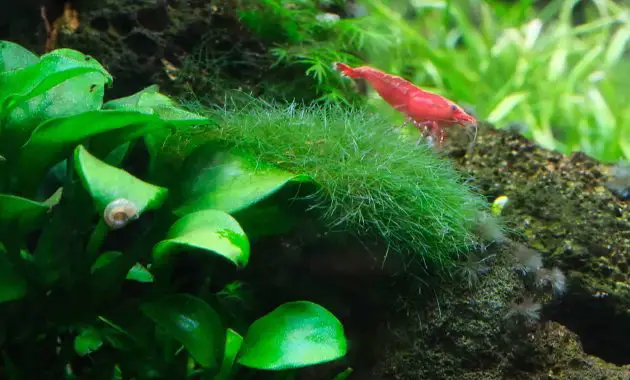
Water Change And Regular Maintenance
These two points are vital to make your tank keep running. Without that, your fish tank may be wrecked.
Weekly water change and cleaning up any objects such as siphon off any debris and waste on the substrate using gravel cleaner, scrubbing the wall glass, and removing any algae if they grow there.
Always use a test kit to check water parameters and nutrient levels. If there is an imbalance compound, fix it soon. Add liquid fertilizers to boost the plants’ growth.
Offer enough food to your fish, remember do not overfeed them. The leftovers could help the algae to spread and lower the water quality.
Always Check The Circulation System And Give Enough Light
Ensure the fresh water flows to whole places inside the tank. We advised using a canister filter; its performance is excellent to cover any dead spots inside the aquarium.
You can also use a small powerhead to raise the flow rate; it is helpful for the weak filter system.
Set the lighting around 6-8 hours; utilizing an aquarium smart LED lamp is more efficient. You can set up the duration and spectrum automatically, so you don’t feel worried when you are on vacation for a long time.
Read Also: Freshwater Amazon Pufferfish Caresheet
How To Remove The Cladophora Algae From Your Aquarium
Looking at your beloved planted tank covered by the blanketweed is something that very unsightly views; any fish tank keepers do not want it to happen.
When your tank is affected by cladophora algae, it will release an unpleasant smell and branched greeny string over the aquarium, water surface, and tank objects.
But do not be discouraged; below are several methods that you can do to get rid of them from your tropical aquarium.
Wipe Up Them Manually
Kill the branched algae manually by winding them around a stick or algae scrapper like candy floss is slightly effective to control their numbers.
This way does not remove the algae entirely, but it works well in the floating and unattached string algae form.
Prune the dead, old, and infected leaves using aquascaping scissors and make some space for plants to grow optimally by cutting the dense clumps. Once completed, do a water change between 30-70% depending on an outbreak level.
Take your test kit and check the water parameter and quality; fix it soon if there is an imbalance substances.
Make sure your tank should follow this rule:
- CO2 Level= 20-30 mg/l
- Phosphate= 0.1-1 mg/l
- Nitrate= 10-25 mg/l
- Potassium= 5-10 mg/l
- Magnesium= >10 mg/l
- pH Level= 7-7.5
- Lighting Duration= 6-8 hour
Boosting the CO2 content can help this technique to get a better result. Increase the doses for a few days and add more algae eaters; lets them work as they are.
If your aquarium does not use Carbon dioxide injection, you can buy it on Amazon or make your own DIY CO2 kit at your home.
Keep watching the tank progress; maybe you need more time doing this treatment. Be patient; the results will not betray the effort.
You can perform a blackout before another advanced method if the guide above does not significantly affect it.
Read Also: “Carinotetraodon Travancoricus” The Smallest Freshwater Puffer Fish
Liquid Carbon Treatment
We called this treatment a “fogging method,” where a syringe fills up with some doses of liquid carbon and uses it directly to the cladophora algae.
It is effortless and also safe for any population in your tank. You can use about 3-5 ml doses per day until the algae die. This liquid can also defeat any freshwater algae types; combining this method with algae eaters becomes more powerful.
Medication Treatments
Nowadays, you can find many medical products on the internet or local aquarium stores specially used for algae treatment.
The Algae Clean Out, API Algaefix, and Pondcare Algaefix are usually used to kill the blanketweed algae in the aquarium; remember to read and follow the instructions.
The utilization of 3% hydrogen peroxide (H2O2) is another medical treatment that many aquarists won’t use because this liquid is harmful to fish and plants.
This treatment probably gives more chance to success in removing the cladophora algae, but we do not suggest using it. It’s only suitable for experts aquarium keepers because it’s high risk.

